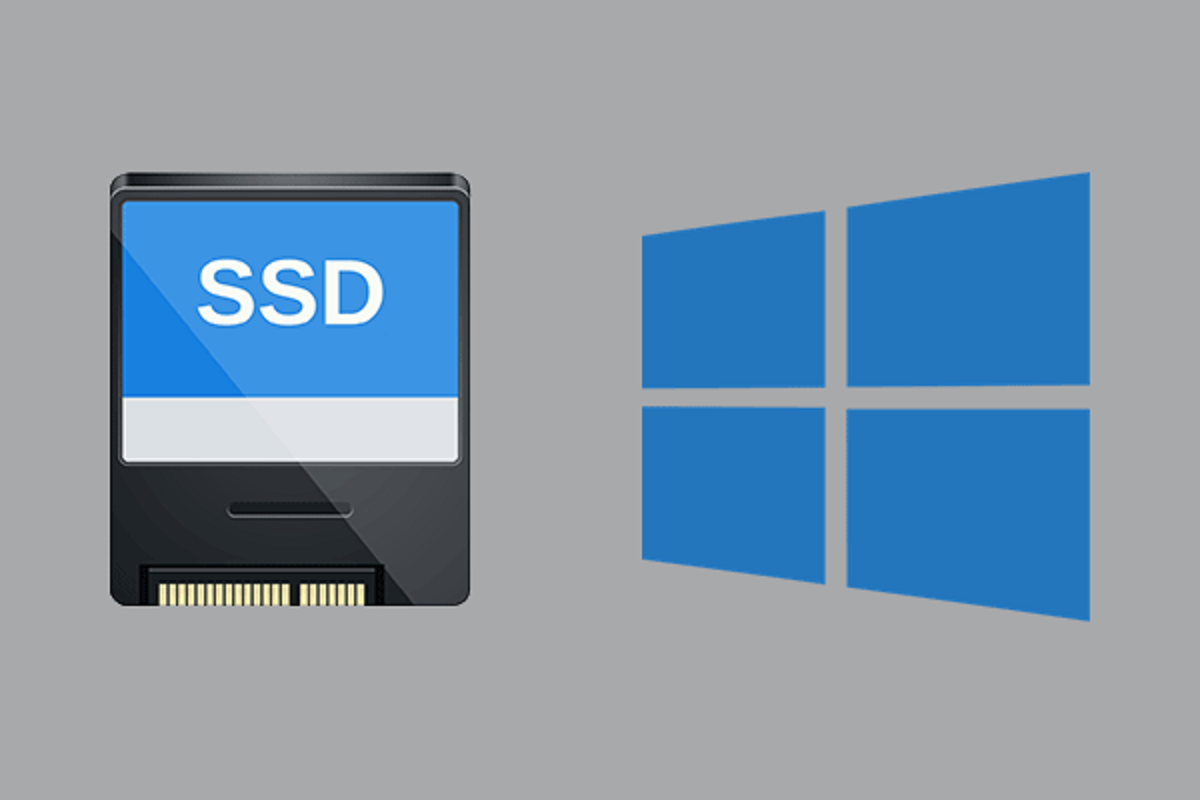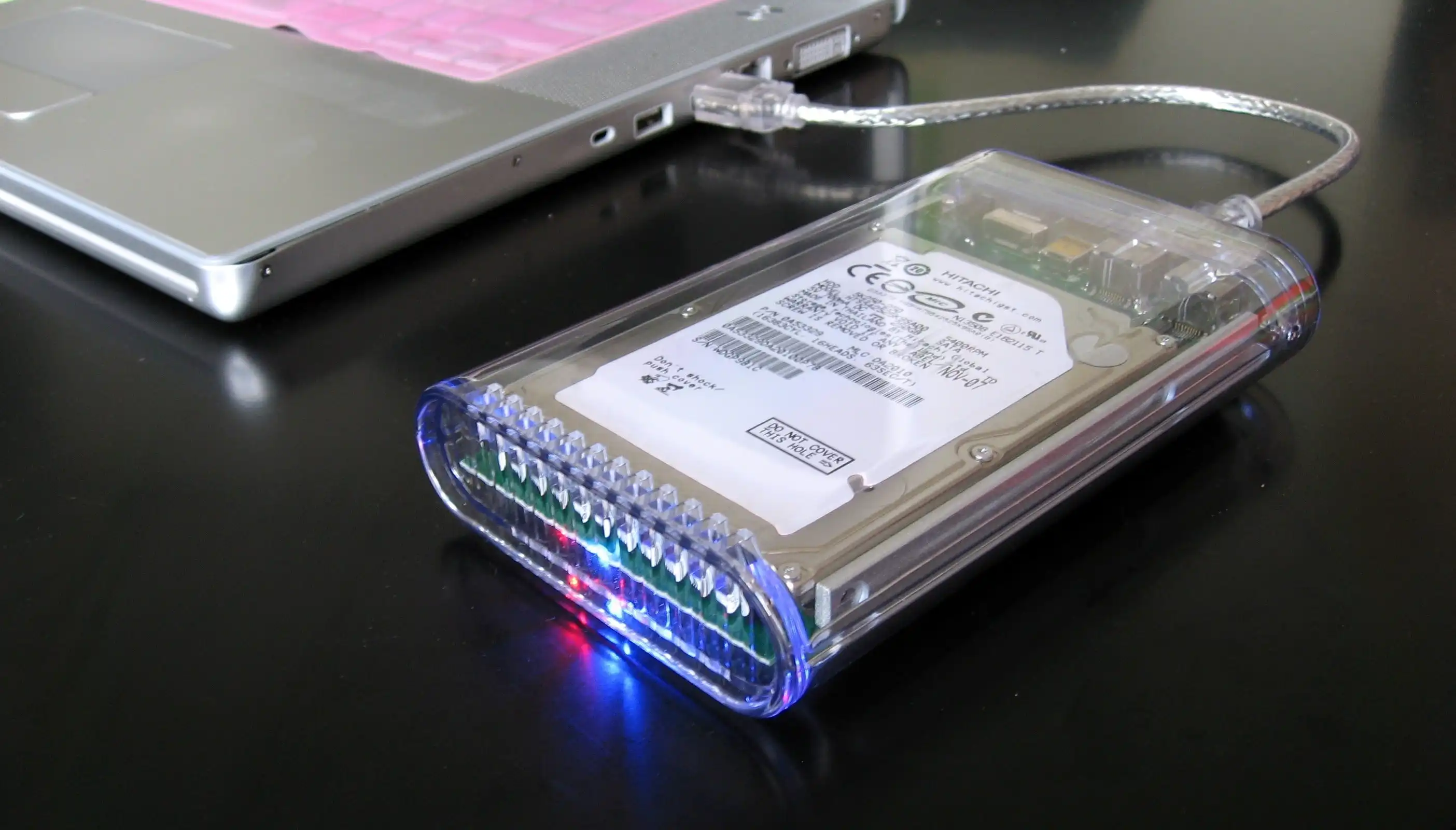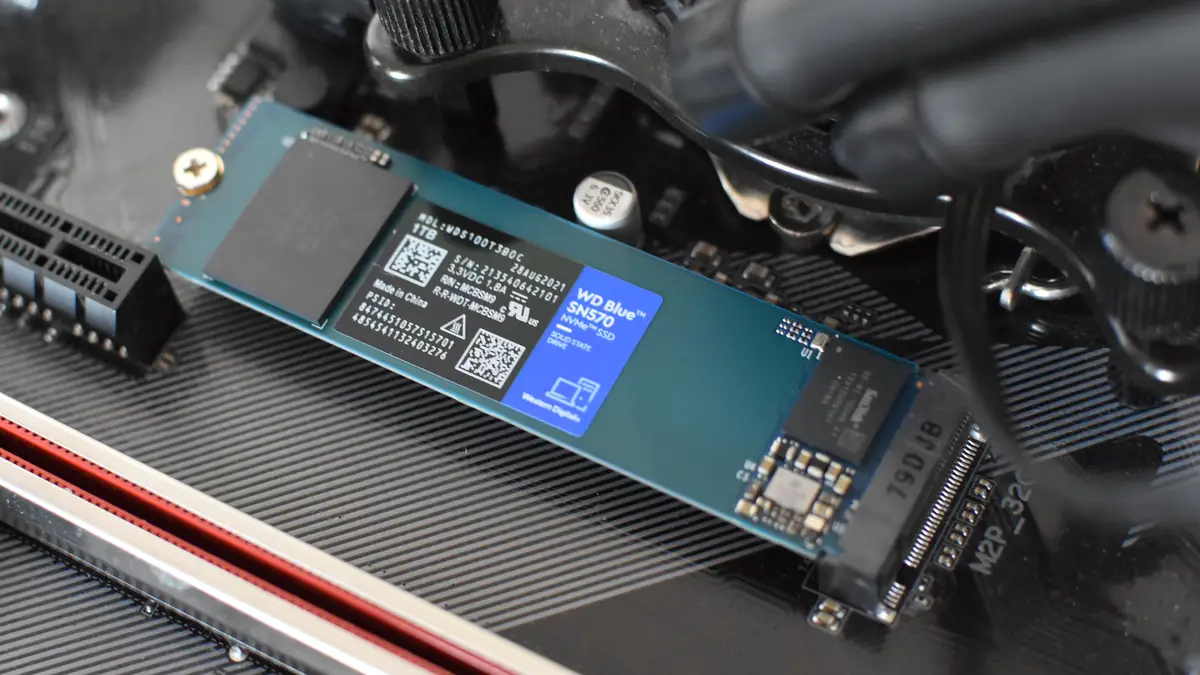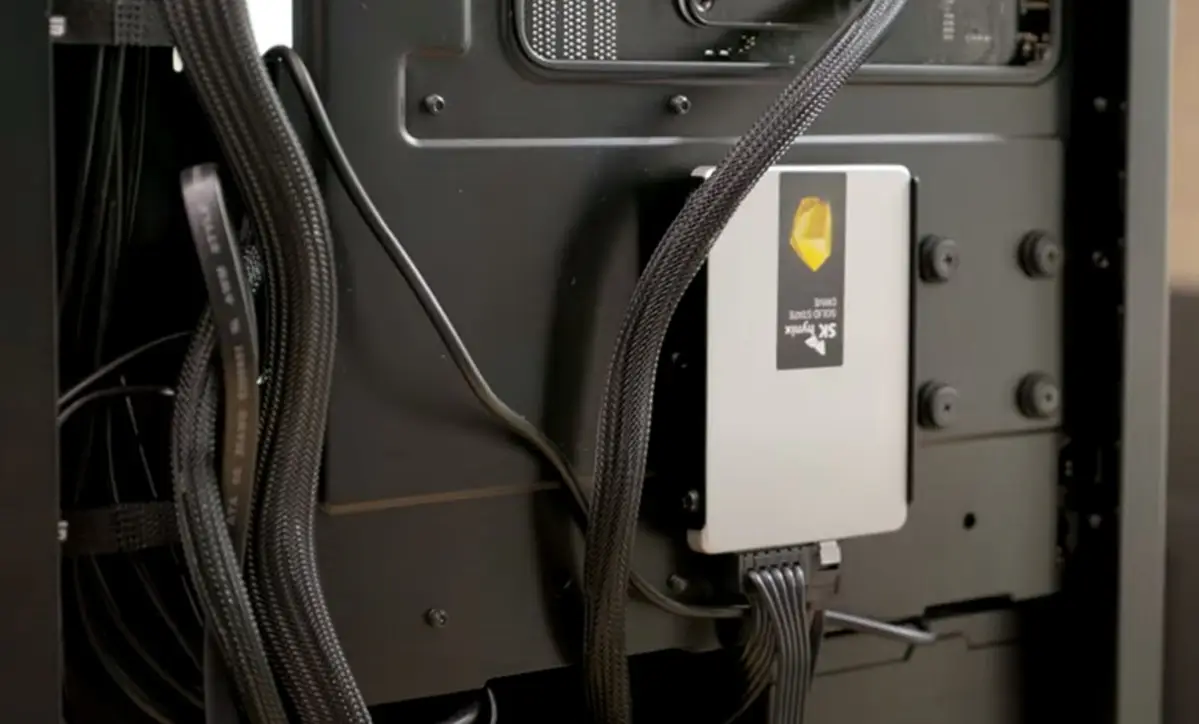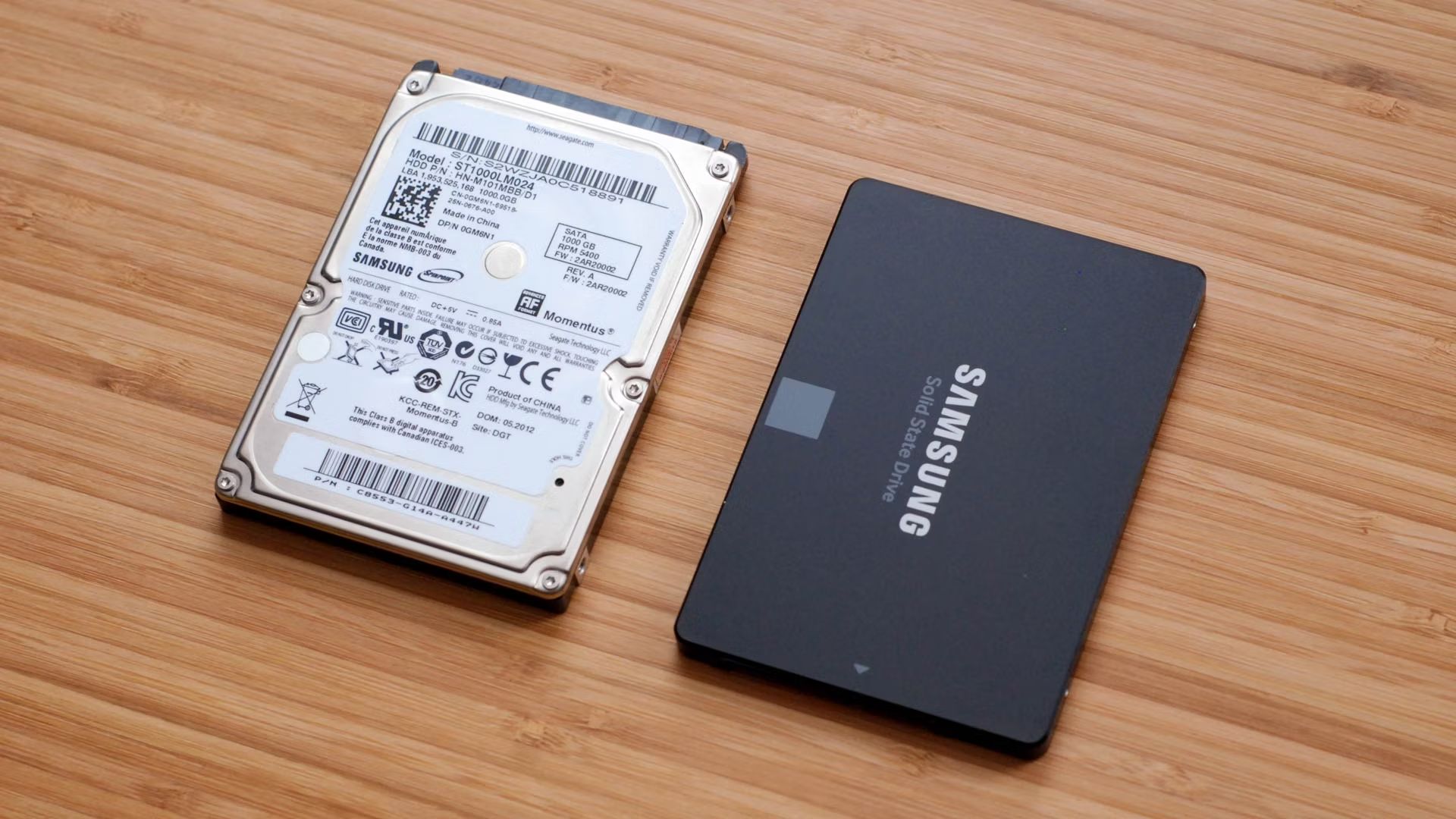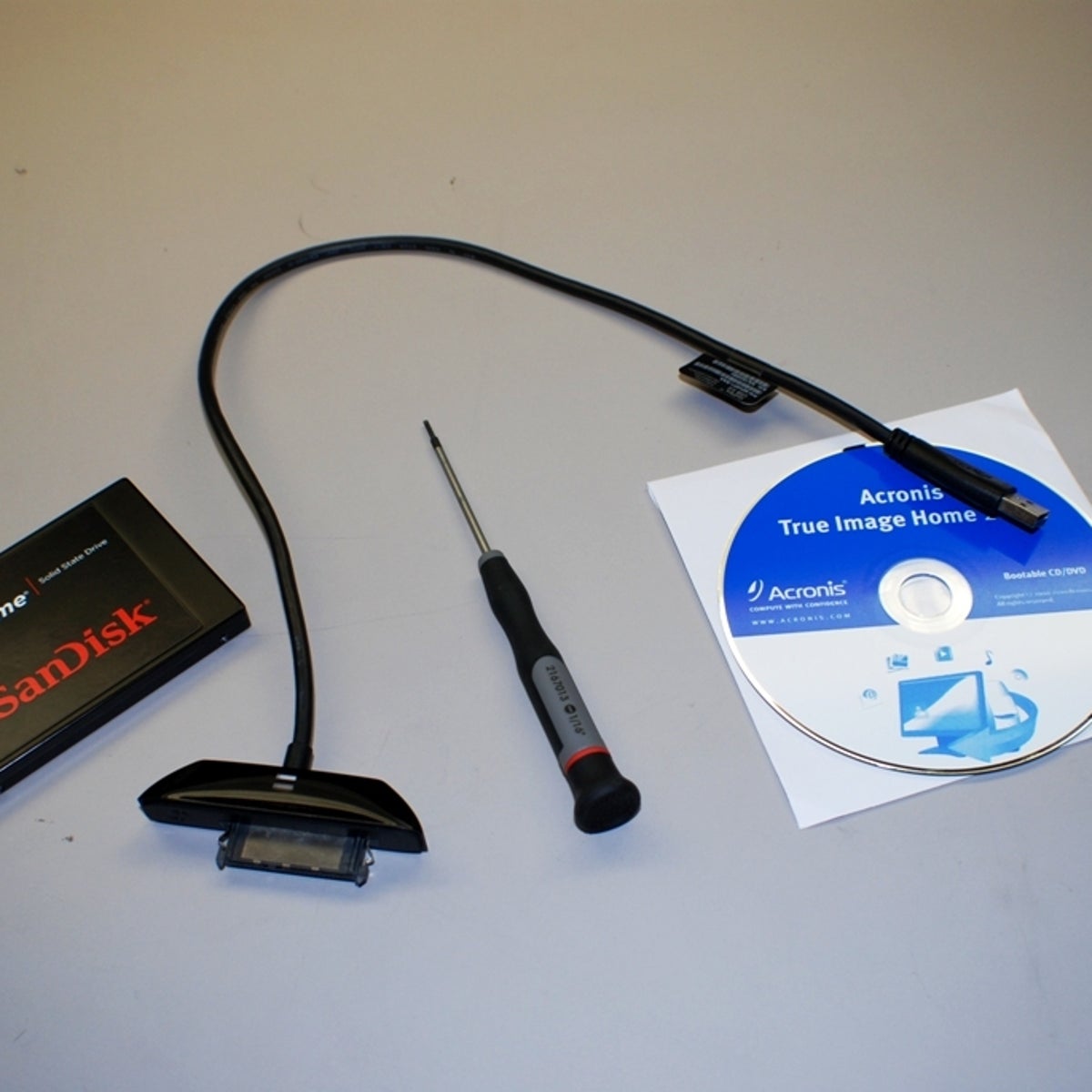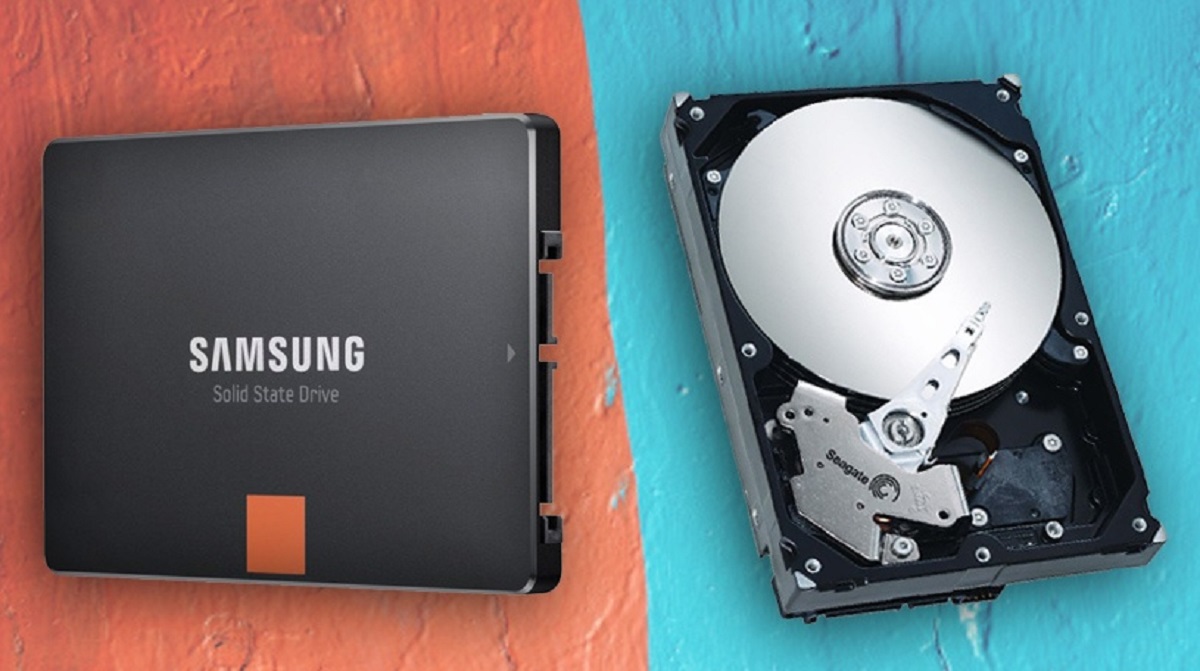Introduction
Moving the internal hard disk drive to the top of the boot priority list is a common task for computer users who want to optimize their system’s performance. The boot priority list determines the order in which the computer searches for an operating system to load at startup. By placing the internal hard disk drive at the top of the list, you can ensure that the computer boots directly from it, resulting in faster startup times and smoother overall performance.
Understanding how the boot priority list works is essential to know why moving the internal hard disk drive to the top is beneficial. Typically, the computer first looks for a bootable drive in its internal storage devices, such as the hard disk drive or solid-state drive. If it doesn’t find a bootable drive, it moves on to external devices like USB drives or CDs/DVDs.
There are several reasons why you might want to move your internal hard disk drive to the top of the boot priority list. Firstly, it saves time by eliminating the need for the computer to search for other bootable devices before loading the operating system. Secondly, if you have multiple drives connected to your computer, such as SSDs or HDDs, setting the primary operating system drive as the first boot option ensures that the computer will always start up from the drive containing your operating system.
Before attempting to move the internal hard disk drive to the top of the boot priority list, it’s a good practice to check the current boot order. This will help you understand the existing configuration and ensure that you make the necessary changes in the correct settings.
In the next section, we will discuss how to check the current boot priority list and then proceed to the steps for moving the internal hard disk drive to the top.
Understanding the Boot Priority List
The boot priority list, also known as the boot sequence or boot order, determines the order in which a computer searches for a bootable device during startup. It is a crucial aspect of the system’s firmware, such as the Basic Input/Output System (BIOS) or the Unified Extensible Firmware Interface (UEFI).
The purpose of the boot priority list is to find and load the operating system from a bootable device, such as a hard disk drive, solid-state drive, USB drive, or CD/DVD. The computer follows a hierarchical order defined in the boot priority list to search for these devices.
Typically, the computer first checks the internal storage devices, such as the hard disk drive or solid-state drive, for a bootable operating system. If a bootable device is found, the computer proceeds to load the operating system from that device.
If the internal storage devices do not contain a bootable operating system, the computer moves to external devices connected to the system, such as USB drives or CD/DVDs. It scans each device in the order specified in the boot priority list until a bootable device is found.
Once a bootable device is identified, the computer loads the operating system from that device into the system’s memory, initiating the startup process.
It’s important to note that the boot priority list configuration may vary depending on the system’s firmware. Traditional BIOS-based systems typically have a fixed order of devices, while UEFI-based systems offer more flexibility, allowing users to customize the boot order.
Customizing the boot priority list is particularly useful when you want to change the default bootable device or prioritize a specific device over others. In this case, moving the internal hard disk drive to the top of the list ensures that the computer always boots directly from it, bypassing unnecessary searches for other devices.
Now that we have a clear understanding of the boot priority list, let’s proceed to the next section, where we will explore how to check the current boot priority list before making any changes.
Reasons to Move Internal Hard Disk Drive to the Top
There are several compelling reasons why you may want to move your internal hard disk drive to the top of the boot priority list. Let’s explore these reasons in detail:
1. Faster Boot Times: By setting the internal hard disk drive as the first boot option, the computer avoids unnecessary searches for other bootable devices. This results in faster boot times, as the system can directly load the operating system from the primary storage drive.
2. Seamless Operation: Setting the internal hard disk drive as the top boot priority ensures that the computer always starts from this drive. This eliminates the risk of accidentally booting from an external device or secondary drive, which may have a different operating system or contain less critical files.
3. Stability and Reliability: When the internal hard disk drive is placed at the top of the boot priority list, it becomes the primary boot device. As a result, the system relies on a stable and reliable drive to start up consistently. This reduces the chances of encountering boot errors or issues caused by less reliable external devices.
4. Prioritizing the Operating System: If you have multiple drives connected to your computer, setting the internal hard disk drive as the first boot option ensures that the computer always boots from the drive containing your operating system. This is advantageous if you have installed multiple operating systems on different drives, as it allows you to specify which operating system should be loaded by default.
5. Improved Performance: By prioritizing the internal hard disk drive, which typically has faster data transfer speeds compared to external drives, you can ensure optimal performance during boot and when accessing system files.
By moving the internal hard disk drive to the top of the boot priority list, you can enjoy faster startups, increased stability, and seamless operation. It puts you in control of the boot process and allows you to prioritize the operating system and storage device that best suits your needs.
Next, we will walk you through the process of checking the current boot priority list before making any changes.
Checking the Current Boot Priority List
Before you proceed to move the internal hard disk drive to the top of the boot priority list, it’s essential to check the existing boot order on your computer. This will help you understand the current configuration and ensure that you make the necessary changes in the correct settings. Here’s how you can check the current boot priority list:
1. Access BIOS/UEFI Settings: Restart your computer and enter the system’s BIOS or UEFI settings. The specific key or key combination to access these settings varies depending on the manufacturer and model of your computer. Common keys include F2, F10, Delete, or Esc. Look for an on-screen prompt during the boot process that indicates the key to press to enter the setup.
2. Navigate to Boot Options: Once you are in the BIOS/UEFI settings, locate the “Boot” or “Boot Options” menu. This menu contains the settings related to the boot priority list.
3. View Boot Order: Within the Boot menu, you should find a list of devices in a specific order, representing the current boot priority. Typically, the list displays the connected storage devices and other bootable devices. Take note of the current order and the device that is currently set as the first boot option.
4. Make Changes if Needed: If the internal hard disk drive is not already at the top of the list, you will need to modify the boot order. Refer to your computer’s user manual or on-screen instructions for specific steps on how to change the boot priority settings.
5. Save and Exit: After making the necessary changes to the boot priority list, save your settings and exit the BIOS/UEFI setup. The computer will restart, applying the new boot order configuration.
By following these steps, you can easily check the current boot priority list on your computer. Once you have verified the existing configuration, you can proceed to move the internal hard disk drive to the top. In the next section, we will explore the steps to accomplish this through two different methods: accessing the BIOS/UEFI settings and using the boot menu.
Steps to Move Internal Hard Disk Drive to the Top
Moving the internal hard disk drive to the top of the boot priority list can be done through two different methods: accessing the BIOS/UEFI settings and using the boot menu. Here are the steps for each method:
Option 1: Accessing BIOS/UEFI Settings
1. Restart your computer and enter the BIOS/UEFI settings by pressing the designated key or key combination during the boot process. Common keys include F2, F10, Delete, or Esc. Refer to your computer’s user manual or look for an on-screen prompt for the specific key.
2. Navigate to the “Boot” or “Boot Options” menu using the arrow keys on your keyboard.
3. Find the device that represents the internal hard disk drive in the boot order list. It may be labeled as “SATA-HDD,” “Primary Master,” or something similar.
4. Use the appropriate keys (usually + or -) to move the internal hard disk drive up the list, making it the first boot option. Refer to the on-screen instructions or your computer’s user manual for the specific key(s) to change the boot order.
5. Save the changes and exit the BIOS/UEFI settings. This will typically be done by pressing the F10 key and confirming your selection. The computer will restart with the new boot priority settings.
Option 2: Using Boot Menu
1. Restart your computer and look for the key or key combination to access the boot menu. This is usually presented as a brief on-screen message during the boot process. Common keys for accessing the boot menu include F12, F8, or Esc.
2. Press the designated key to enter the boot menu and navigate to the device representing the internal hard disk drive.
3. Select the internal hard disk drive as the boot option by using the arrow keys on your keyboard. Press Enter to confirm your selection.
4. The computer will restart and boot directly from the internal hard disk drive.
It’s important to note that the specific steps may vary depending on your computer’s make and model. Additionally, some systems may require you to disable Secure Boot or enable legacy boot mode before you can modify the boot order.
Take caution while making changes in the BIOS/UEFI settings, as incorrect modifications can disrupt the system’s functionality. If you are unsure about the process, it is advised to consult the user manual or seek assistance from the manufacturer’s support.
In the next section, we will provide some tips and considerations to keep in mind when moving the internal hard disk drive to the top of the boot priority list.
Option 1: Accessing BIOS/UEFI Settings
Accessing the BIOS/UEFI settings is a common method to modify the boot priority list on your computer. Here are the steps to follow:
1. Restart your computer and look for the key or key combination to enter the BIOS/UEFI settings. The specific key(s) may vary depending on your computer’s manufacturer, but common keys include F2, F10, Delete, or Esc. A prompt indicating the key(s) to press is usually displayed during the boot process. Refer to your computer’s user manual if you are unsure.
2. Once you enter the BIOS/UEFI settings, you will see a menu with different options. Navigate through the menu using the arrow keys on your keyboard.
3. Look for the “Boot” or “Boot Options” menu. The exact name of this menu may vary depending on your computer’s firmware. Use the arrow keys to highlight the menu and press Enter to enter the boot options.
4. Within the boot options, you will find a list of devices in the boot priority order. Each device will usually have a specific label, such as “SATA-HDD,” “Primary Master,” or the specific brand/model of the hard disk drive.
5. To move the internal hard disk drive to the top of the boot priority list, select the corresponding device using the arrow keys. Once selected, use the designated key(s) (usually + or -) to move it up or down the list. Ensure that the internal hard disk drive is at the top of the list.
6. After adjusting the boot priority list, save the changes by following the on-screen instructions. The process typically involves pressing the F10 key or a similar key to save and exit the settings.
7. The computer will restart with the new boot priority configuration. It will now boot directly from the internal hard disk drive.
Remember that the exact steps and options may differ slightly based on your computer’s firmware. If you are uncertain about any of the settings or options, consult your computer’s user manual or contact the manufacturer’s support for guidance.
In the next section, we will explore the second method of moving the internal hard disk drive to the top of the boot priority list using the boot menu.
Option 2: Using Boot Menu
Using the boot menu is another way to modify the boot priority list on your computer. Here’s how you can move the internal hard disk drive to the top using this method:
1. Restart your computer and look for the key or key combination to access the boot menu. This key is typically displayed briefly on the screen during the boot process. Common keys for accessing the boot menu include F12, F8, Esc, or a combination like Fn + F12. Consult your computer’s manual if you are unsure about the specific key to press.
2. Once you identify the correct key, press it before the operating system begins to load. Timing is crucial, so be vigilant during the boot process. This will bring up the boot menu, a list of available bootable devices.
3. Navigate through the boot menu using the arrow keys on your keyboard. Look for the device that represents the internal hard disk drive. It might be labeled with the drive’s brand/model or simply as “HDD.” The exact labeling may vary between systems.
4. Select the internal hard disk drive as the boot option by highlighting it with the arrow keys and press Enter to confirm your selection. This action tells the computer to boot directly from the internal hard disk drive.
5. The computer will now restart and load the operating system from the internal hard disk drive.
Note that some systems may require you to enable the boot menu or change the boot mode (UEFI vs. Legacy) in the BIOS/UEFI settings before the boot menu becomes accessible.
If you are unsure about accessing the boot menu or its functionality, refer to your computer’s user manual or contact the manufacturer’s support.
Once you have successfully moved the internal hard disk drive to the top of the boot priority list using the boot menu, the computer will consistently prioritize this device during startup, ensuring faster and more efficient boot times.
In the next section, we will provide you with some valuable tips and considerations when moving the internal hard disk drive to the top of the boot priority list.
Tips and Considerations
When moving the internal hard disk drive to the top of the boot priority list, it’s important to keep in mind the following tips and considerations:
1. Compatibility: Ensure that your operating system and important files are located on the internal hard disk drive you are prioritizing. If you have multiple drives with different operating systems, prioritize the drive that contains the desired operating system.
2. Verify Boot Order Changes: After making changes to the boot priority list, double-check that the internal hard disk drive is set as the first boot option. This will avoid any unexpected booting from other devices.
3. Firmware Differences: Remember that the steps to modify the boot priority list may differ between traditional BIOS-based systems and newer UEFI-based systems. Consult your computer’s user manual or the manufacturer’s support resources for accurate instructions.
4. Save BIOS/UEFI Settings: Whenever you make changes in the BIOS/UEFI settings, be sure to save the changes before exiting. Failing to do so will result in the settings reverting to their previous configuration.
5. Backup Important Data: Before making any changes to the boot priority list or any other critical system settings, it is always a good practice to back up your important files. This ensures that you have a copy of your data in case anything goes wrong during the process.
6. Seek Professional Help, if Necessary: If you are unfamiliar with accessing BIOS/UEFI settings or making changes to the boot priority list, it is advisable to seek assistance from a knowledgeable professional. They can guide you through the process and ensure the correct steps are followed.
7. Take Precautions: When accessing the BIOS/UEFI settings or performing any system-related changes, be cautious and avoid modifying other settings if you are unsure of their implications. Changing the wrong settings can lead to system instability or even make your computer unbootable.
By keeping these tips and considerations in mind, you can safely and efficiently move the internal hard disk drive to the top of the boot priority list, optimizing your computer’s startup performance.
In the next section, we will conclude the article with a summary of the key points discussed.
Conclusion
Managing the boot priority list is an essential aspect of optimizing your computer’s boot process and overall performance. By moving the internal hard disk drive to the top of the boot priority list, you can ensure faster startups, prioritize the correct operating system, and enjoy greater stability.
In this article, we discussed the importance of understanding the boot priority list and the benefits of placing the internal hard disk drive at the top. We explained how to check the current boot priority list to familiarize yourself with the existing configuration.
We then provided two methods for moving the internal hard disk drive to the top: accessing the BIOS/UEFI settings and using the boot menu. These step-by-step instructions empower you to make the necessary changes to optimize your boot order.
We also shared tips and considerations to keep in mind during the process, including verifying boot order changes, backing up important data, and seeking professional help if needed. These considerations ensure a smooth transition and mitigate any potential risks.
By following the techniques and best practices outlined in this article, you can take control of your computer’s boot process and maximize its efficiency.
Remember, every computer may have slight variations in its firmware and boot settings. Therefore, it’s crucial to refer to your specific system’s user manual or consult the manufacturer’s support resources for accurate instructions tailored to your device.
Now that you have a clear understanding of how to move the internal hard disk drive to the top of the boot priority list, you can optimize your computer’s performance and enjoy faster and more reliable startups.









